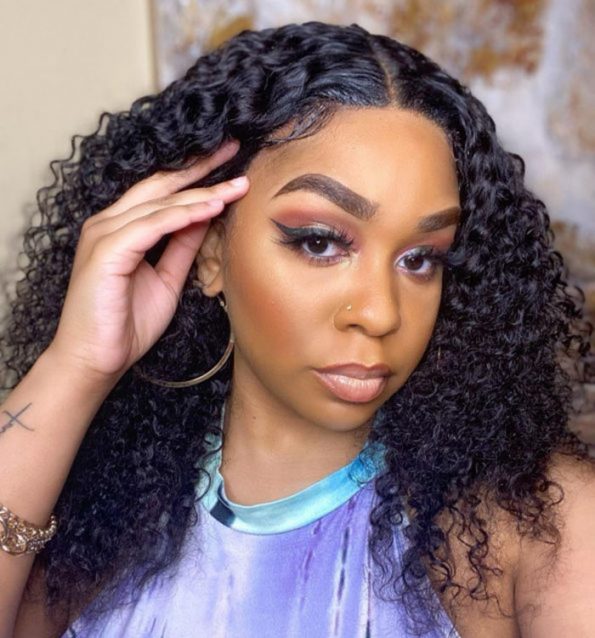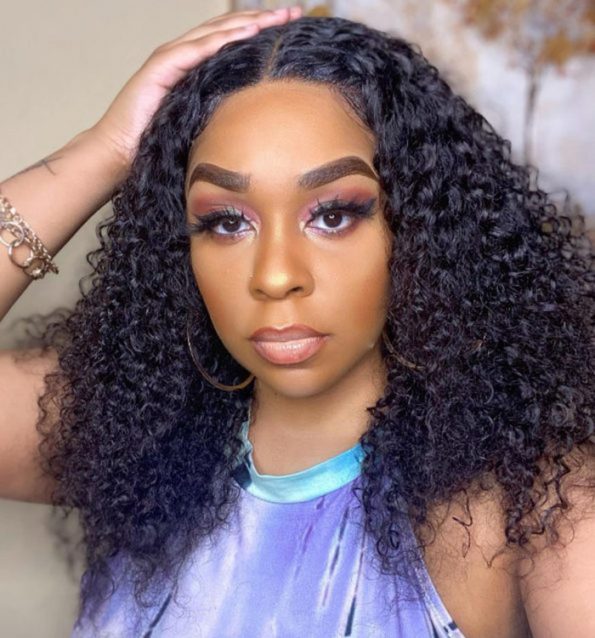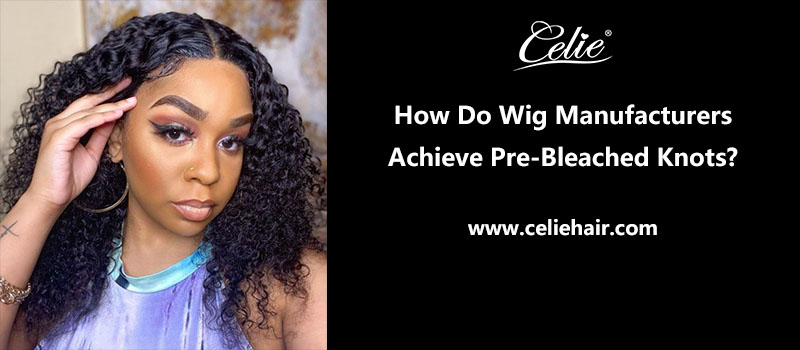In recent years, the demand for natural-looking wigs has skyrocketed, leading wig manufacturers to constantly innovate and improve their products. One significant advancement in wig craftsmanship is the achievement of pre-bleached knots. These knots play a crucial role in creating a realistic hairline, making wigs virtually indistinguishable from natural hair. In this article, we’ll delve into the intricate process of how wig manufacturers achieve pre-bleached knots, exploring the techniques and craftsmanship that go into creating this essential feature.

The basics: What are knots in wigs?
Before we dive into the specifics of how wig manufacturers achieve pre-bleached knots, it’s essential to understand what knots are in the context of wig construction. In a wig, each strand of hair is individually hand-tied or machine-sewn onto the wig cap. At the base of these strands, there are small knots that secure the hair in place. These knots are typically made of a darker material, usually black or brown, which can make them visible and stand out against the wearer’s scalp, detracting from the wig’s natural appearance.
The challenge: Visible knots.
The visibility of these knots has long been a challenge for wig manufacturers. When the knots are dark and visible, they create an unnatural appearance, akin to tiny dark spots on the scalp. This is a clear giveaway that the wearer is donning a wig rather than sporting their natural hair. The quest to create wigs with imperceptible knots led to the development of various techniques, with pre-bleached knots emerging as a game-changing solution.
The magic of pre-bleached knots.
Pre-bleached knots, as the name suggests, are knots that have been lightened or bleached to match the wearer’s scalp tone. This process involves carefully and precisely altering the color of the knots, making them virtually invisible when the wig is worn. The result is a realistic and undetectable hairline, allowing the wearer to confidently showcase their wig without fear of revealing its artificial nature. Achieving pre-bleached knots is a meticulous craft that involves several steps and techniques.
The intricate process: How do they do it?
Knot selection.
The journey towards pre-bleached knots begins with the selection of the right type of knots. Wig manufacturers typically use Swiss or French lace to create the wig cap. These materials are thin and delicate, making it easier to achieve a natural look. The choice of lace is crucial, as it affects how well the knots can be bleached and how well the wig will blend with the wearer’s scalp.
Knot bleaching.
The heart of achieving pre-bleached knots lies in the bleaching process. This step requires precision, patience, and an in-depth understanding of how different types of hair and knots react to bleach. Here’s a closer look at the knot bleaching process:
a. Prepping the knots: Before bleaching, the knots are carefully secured to a wig block or head. This ensures that they remain in the correct position throughout the process.
b. Bleach application: A diluted bleach solution is applied to the knots using a fine brush or cotton swab. Wig makers must be extremely cautious during this step, as bleach can damage the hair if left on for too long. The bleach is left on for a specific duration, depending on the type of hair being used and the desired result.
c. Monitoring and rinsing: The progress of the bleaching process is closely monitored. Once the knots reach the desired level of lightness, the bleach is carefully rinsed off. Proper rinsing is essential to prevent any residual bleach from damaging the hair or causing irritation to the wearer’s scalp.
d. Neutralization: After bleaching, the knots are often treated with a neutralizing agent to stop the bleaching process and restore the pH balance of the hair. This step ensures that the hair remains healthy and vibrant.
Customization.
Achieving pre-bleached knots is not a one-size-fits-all process. Wig manufacturers must customize the bleaching process to match the wearer’s scalp tone and hair color. This level of customization ensures that the knots seamlessly blend with the wearer’s natural hairline, creating a truly authentic look.
Knot sealing.
After bleaching, the knots are sometimes sealed with a specialized knot sealer or adhesive. This helps prevent any potential shedding of the hair from the wig and ensures the knots remain in place. Knot sealing also contributes to the longevity of the wig, making it a more durable investment for the wearer.
Final styling.
Once the knots are pre-bleached and the wig is assembled, it undergoes final styling. This includes cutting, shaping, and sometimes adding additional layers or texture to mimic the desired hairstyle. The goal is to create a wig that not only boasts pre-bleached knots but also mirrors the natural look and feel of the wearer’s hair.
Challenges and considerations.
While achieving pre-bleached knots is a remarkable feat of craftsmanship, it comes with its own set of challenges and considerations:
Hair type: Different hair types react differently to bleaching, so wig makers must adjust their techniques accordingly. Virgin hair, for example, may bleach more easily than processed or colored hair.
Consistency: Maintaining consistency in knot bleaching across the entire wig is essential to ensure an even and natural appearance. Inconsistencies can lead to a patchy or unnatural look.
Scalp tone matching: Accurately matching the bleached knots to the wearer’s scalp tone requires skill and expertise. Mismatched tones can undermine the effort to create a realistic hairline.
Hairline design: Crafting a natural-looking hairline involves careful placement of the bleached knots. The design should mimic the irregular pattern of a real hairline, with some hairs appearing finer and sparser.
Hair type variability: Different types of hair pose varying challenges in the bleaching process. For instance, achieving pre-bleached knots in straight hair may be comparatively straightforward, but the process becomes more complex with curly or kinky hair textures. Curly hair, for example, has a different structure that can affect the way bleach penetrates the knots, making it crucial to adjust techniques accordingly.
Color matching: Matching the color of the bleached knots to the wearer’s scalp tone can be a tricky endeavor. Skin tones can vary greatly, and achieving a seamless blend requires a keen eye for detail and an understanding of color theory. A slight mismatch can be noticeable and detract from the wig’s natural appearance.
Bleach sensitivity: Bleach can be harsh on hair strands, potentially leading to damage if not handled properly. Wig makers must be cautious about over-bleaching, which can result in brittle and fragile hair. Balancing the need to lighten knots with hair health is a delicate task.
Consistency in knot bleaching: Ensuring uniformity in the bleaching process across the entire wig is essential. Inconsistencies in knot color can lead to an unnatural look, with some areas appearing lighter or darker than others. Achieving a harmonious appearance requires meticulous attention to detail and a steady hand.
Knot sealing challenges: While knot sealing is important for preventing hair shedding and enhancing wig durability, it can be a challenging step. Using the wrong type of sealer or applying it incorrectly can lead to issues like discoloration or stiffness in the knots.
Hairline design expertise: Crafting a convincing hairline involves more than just bleaching knots; it requires a keen understanding of natural hairline patterns. Creating a realistic hairline involves adjusting the density and distribution of knots, ensuring some areas appear finer and sparser than others. Failure to achieve this can result in an obviously artificial look.
Customization Complexity: Achieving pre-bleached knots is not a one-size-fits-all process. Each wig may require a different approach, depending on factors like hair type, desired hairstyle, and the wearer’s preferences. This level of customization can be time-consuming and requires a deep understanding of wig making.
Quality control: Maintaining consistent quality across a range of wigs is essential for a reputable wig manufacturer. Quality control measures must be in place to ensure that each wig that leaves the factory meets the highest standards, both in terms of pre-bleached knots and overall craftsmanship.
Environmental considerations: The use of bleach in the knot bleaching process raises environmental concerns. Proper disposal of bleach and its byproducts must be managed responsibly to minimize environmental impact.

It is far grander scale.
The achievement of pre-bleached knots in wigs is a testament to the dedication and artistry of wig manufacturers. This meticulous process involves selecting the right materials, precise bleaching techniques, customization, and attention to detail. The result is a wig that not only looks like natural hair but also feels like it. Pre-bleached knots have revolutionized the wig industry, allowing wearers to confidently embrace wigs as a versatile and natural-looking accessory.
As the demand for high-quality wigs continues to grow, we can expect further advancements in the art of wig making. The journey towards achieving the most realistic and undetectable wigs will undoubtedly inspire ongoing innovation and creativity in the industry.
















